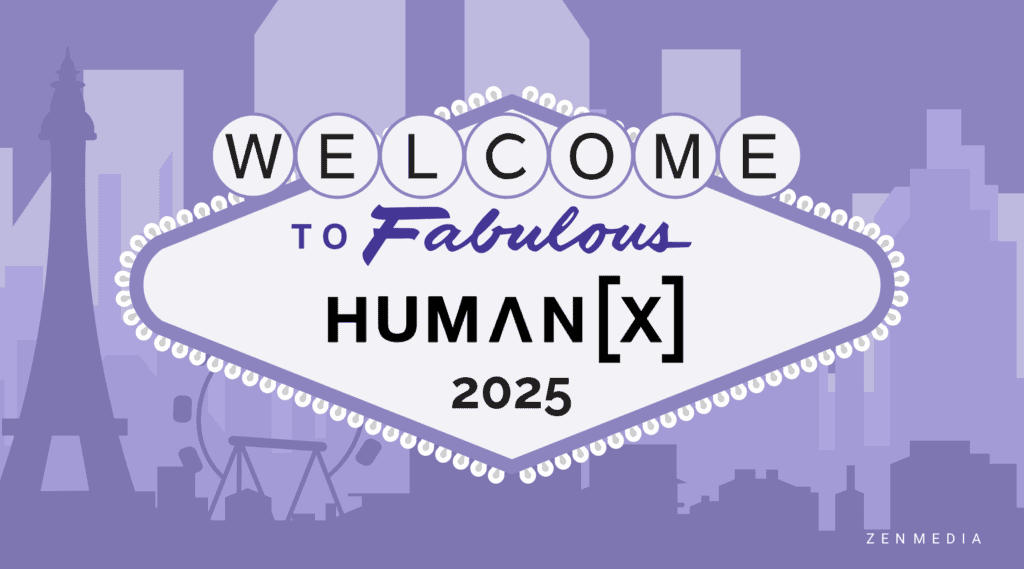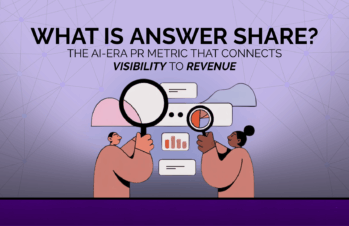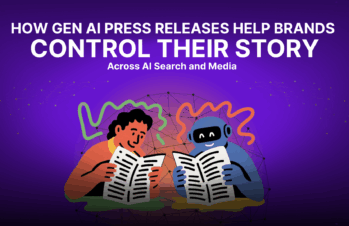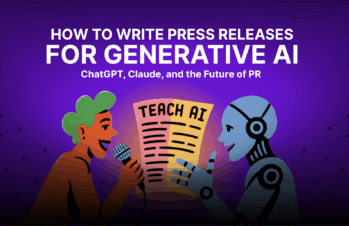I recently got back from HumanX, where I had the privilege of moderating two panels. Let me cut to the chase—I was floored by what I discovered.
When I asked a room full of attendees at an AI conference, “Who uses AI tools daily? Show of hands,” only about 10% raised their hands. Yes, you read that right.
10%.
At an AI conference.
This disconnect between interest and implementation perfectly captures where we are in the PR industry right now: fascinated by AI’s potential but largely standing on the sidelines of actual adoption. As Zen Media’s Head of PR, I’ve been integrating AI tools into our workflow for months, and what I’m seeing is a widening competitive gap that’s about to reshape our entire industry.
The difference between talking about AI and leveraging it for daily impact isn’t subtle—it’s the difference between leading the conversation or playing catch-up in a world of completely transformed communications.
The Competitive Divide: Why Some Teams Are Already Lightyears Ahead
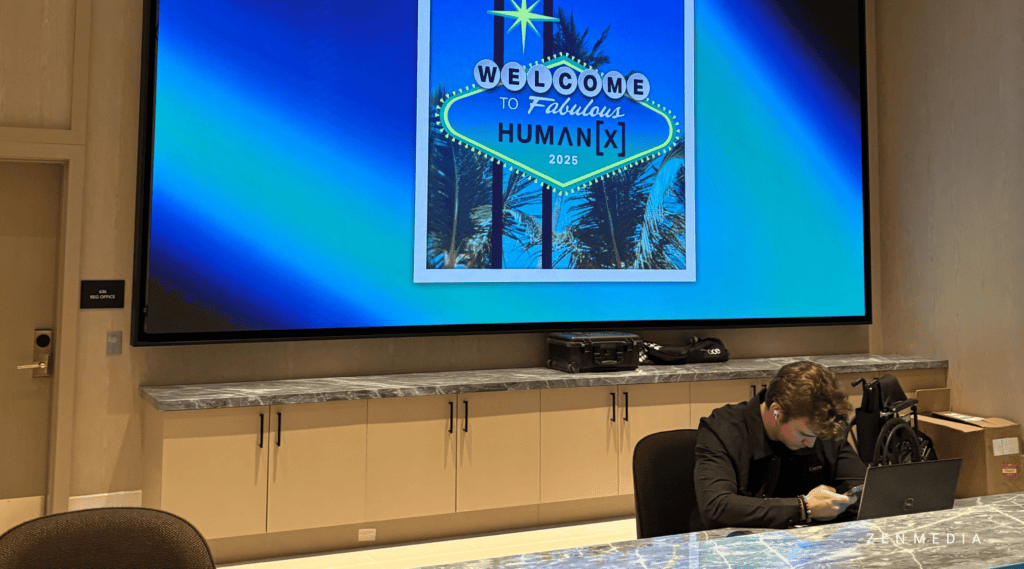
One thing that really stood out at HumanX was that no one has it completely figured out. That said, some people and organizations are already lightyears ahead in implementation. While moderating my panel with Kobie Fuller, Omar Johnson, and Monica Landers, I noticed fascinating contrasts in approaches. For example, Omar mentioned “actively pulling the word AI out of materials,” while Kobie observed that B2B clients are specifically seeking “AI partners.”
The thing is, this dichotomy perfectly illustrates where we are—some brands are integrating AI so seamlessly it doesn’t need labeling, while others are just beginning to recognize the need for transformation.
The competitive advantage isn’t coming from occasional AI experimentation but from consistent implementation across teams. At Zen Media, we’ve witnessed this with clients who embrace AI-powered PR strategies versus those taking a wait-and-see approach. The former are experiencing dramatically faster response times, more personalized media outreach, and data-driven campaign optimizations that simply weren’t possible before.
The latter are struggling with the same resource constraints and manual processes that have plagued public relations for decades. The gap between these approaches isn’t incremental—it’s exponential.
Of course, as Monica emphasized, the “people side of AI” remains the real challenge. It’s not the technology itself but the humans using it (or not using it) that creates the bottleneck. This is critical for PR firms and industry experts to understand: the tools are here now, accessible and increasingly powerful. The limiting factor isn’t technological capability but our willingness to reimagine our processes and develop new skills. At the end of the day, everyone agreed that speed is everything in the AI marketing world, and those who fail to adapt their workflow will inevitably fall behind those who do.
Building Your AI Habit Stack
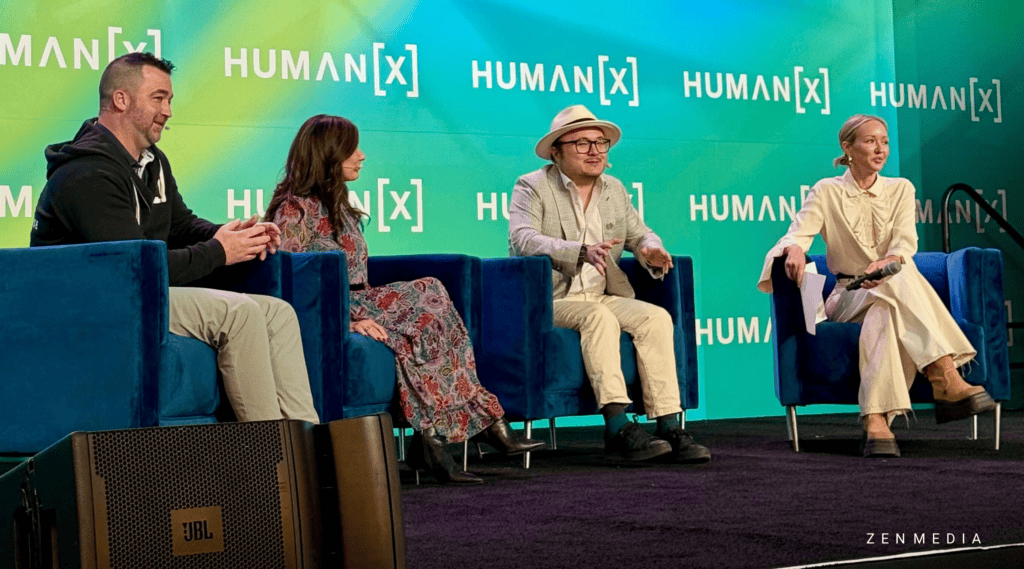
The single biggest takeaway from my HumanX experience wasn’t about fancy algorithms or enterprise implementations—it was about habits. When moderating my second panel with Ben Parr, Blake Sabatinelli, and Lara Shackelford, we all agreed: it’s not about being the best AI prompt engineer, it’s about making AI usage a daily habit. Said another way, perfection is the enemy of progress and when it comes to getting comfortable with AI tools, anyone playing the waiting game is getting left behind. For PR firms (particularly any PR agency representing tech companies and clients who are or who aspire to be category leaders), this means creating consistent systems that integrate AI tools into your everyday workflow, not just when you’re facing a deadline crunch or feeling particularly curious and innovative.
At Zen Media, we’ve developed an AI habit stack that’s transformed our public relations operations:
- A dedicated AI browser bookmark folder with quick access to all our tools
- Separate desktop screens solely for AI workflow
- A comprehensive prompt library in Notion and prompt workflows in Google Docs
- Starting client projects with AI-assisted planning sessions
- Systematically identifying repetitive tasks each week to automate
These aren’t complex initiatives requiring major investment—they’re simple habit changes that collectively create massive impact. In fact, the dedicated desktop approach has been game-changing for me personally—I now instinctively swipe to my AI section as part of my internal process.
For PR firms looking to gain competitive advantage, start with small, consistent changes rather than sweeping transformations. Choose one repetitive task this week—maybe it’s drafting social media copy rough drafts for thought leadership, outlining press releases, creating media lists, or generating pitch angles for a strategic mix of media outlets—and build an AI-assisted process around it. Document what works, refine your prompts, and gradually expand to other areas. This incremental approach builds confidence and competence simultaneously, creating a foundation for more ambitious AI implementations down the road.
How AI Is Transforming Public Relations and PR Services
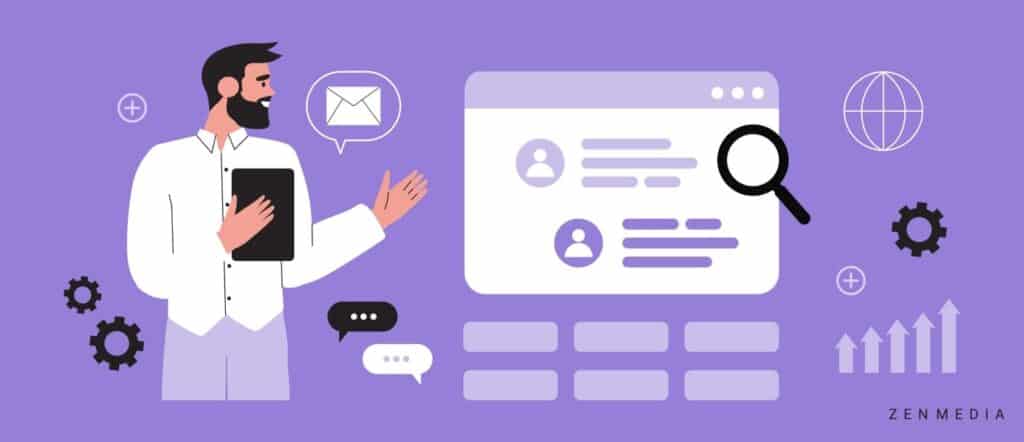
At HumanX, speakers emphasized that genuine innovation lies in addressing real-world problems, not just generating buzz. This perspective resonates deeply with what we’re experiencing in PR—and it’s not at all limited to tech companies, by the way! The most valuable AI applications aren’t flashy stunts but practical enhancements to existing processes brands of every industry can benefit from:
- Faster deployment of crisis communications strategies
- Stronger, more responsive reputation management
- Deeper analytics insights (we’re talking media coverage, website traffic, brand visibility, earned media, and more)
- Smarter resource allocation
- More personalized media outreach and improved media relations
- Rapid development of outlines and rough drafts (key for thought leadership)
- Real-time voice and preference guides for clients who want to reach a wider audience through strategic, insightful thought leadership
The reality is that AI is transforming public relations in ways both visible and invisible. Visible transformations include the obvious use cases like content generation and media monitoring. But the invisible transformations may be even more profound:
- The ability to analyze massive datasets to identify emerging narratives before they trend
- Predictive analytics that anticipate how messages will resonate with specific target audiences
- Automated systems that continuously optimize campaign performance based on real-time brand visibility, leadership, and target customer feedback
These capabilities don’t just improve B2B PR—they fundamentally redefine what’s possible.
Like Kobie mentioned during our panel discussion at HumanX, we’re returning to “the art of what marketing is” after years of technical obsession. This perfectly captures what we’re seeing at Zen Media: AI isn’t replacing the creative, strategic heart of PR—it’s actually freeing us to focus more deeply on that creative, strategic heart by handling the repetitive tasks that previously consumed our time.
Advanced technology is making PR more human, not less, by giving us back the time and mental space to craft genuinely thoughtful strategies.
The Ethics of AI-Powered PR
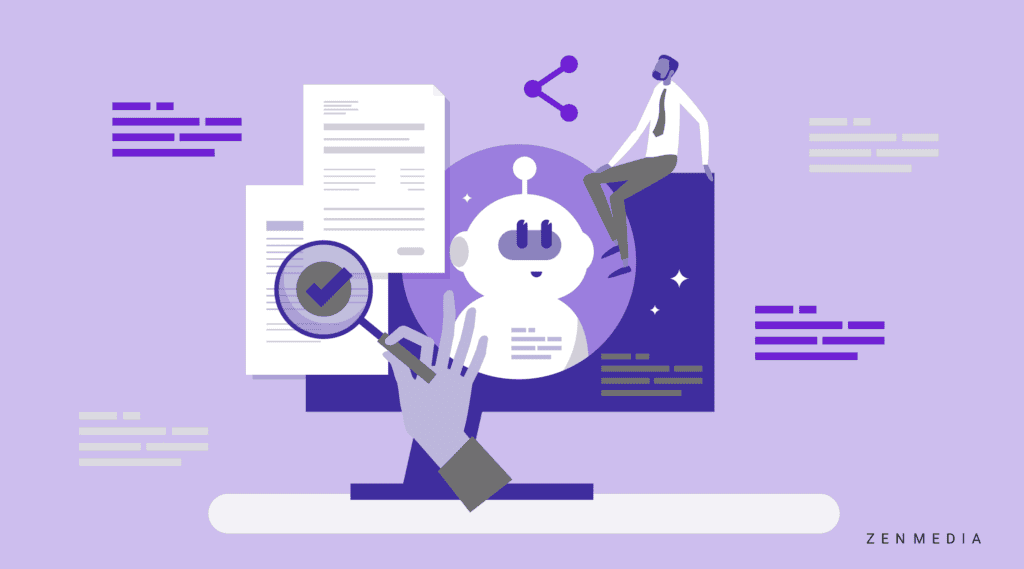
This year’s conference also underscored the ethical challenges surrounding AI, which are particularly acute in PR where trust and credibility are paramount. The debate over federal data protection laws highlighted the regulatory uncertainty we’re all navigating, with as many as 28 different state data privacy standards—while this 2024 source mentions 20, this year, 8 new, individual state privacy laws are going into effect. The result is creating a compliance nightmare. For PR practitioners, this regulatory fragmentation creates significant risk, especially when using AI to process consumer data or generate content that might be attributable to clients.
At Zen Media, we’re developing frameworks to ensure ethical AI use in PR, like implementing oversight processes for any AI-generated content, ensuring that key messages align with client values and that outputs are factually accurate. Safeguards like these aren’t just about compliance—they’re about preserving the trust that sits at the foundation of effective public relations.
And the ethical considerations extend beyond content creation to the broader implications of how AI shapes public discourse. As public relations professionals, we have a responsibility to consider how automated communications systems might amplify certain voices while silencing others, potentially reinforcing existing biases or creating filter bubbles. This means developing ethical guidelines not just for how our in-house team uses AI tools but for the outcomes we seek to achieve with them.
It should go without saying that the industry that shapes public narratives must be especially thoughtful about how AI influences those narratives, both intentionally and unintentionally.
Elevating PR Services Through AI
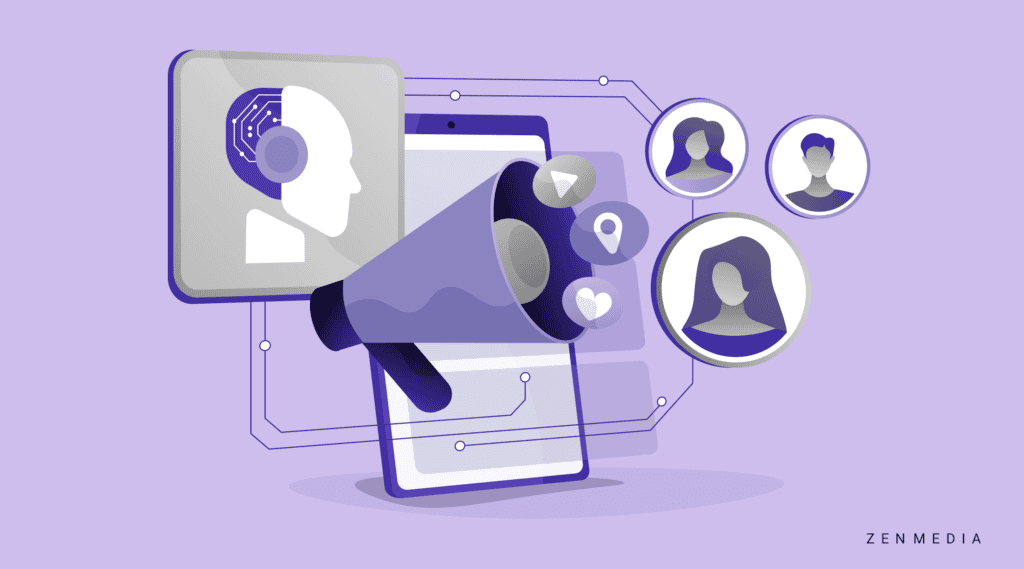
One of the most exciting aspects of AI in PR is its potential to elevate the function from tactical execution to strategic consultation. Historically, PR firms have spent disproportionate time on manual tasks like media list building and rapid coverage reporting—areas where AI excels. By automating these functions, we’re freeing PR professionals to focus on high-value activities like relationship building, strategic planning, and creative ideation that genuinely require human insight.
This shift is transforming the PR professional’s role within organizations. At Zen Media, we’re seeing our team members evolve from tactical executors to strategic advisors who leverage AI to provide deeper insights and more impactful recommendations. Instead of spending hours generating routine content, we’re using that time to immerse ourselves in clients’ industries, understand their competitive landscapes more thoroughly, and develop more sophisticated narrative strategies. AI is enabling us to practice PR at a higher level, with increased focus on outcomes rather than outputs.
As several industry leaders discussed at HumanX, AI has the potential to solve major challenges across industries. In PR, that means addressing longstanding issues like measurement, personalization at scale, and predictive analytics for campaign planning. The PR teams that embrace this strategic potential—rather than simply using AI to automate existing processes—will dramatically increase their value to organizations. It’s exciting to see how AI is fundamentally expanding what PR can accomplish and how it contributes to business objectives.
The Human Element: Why AI Makes Emotional Intelligence More Valuable Than Ever
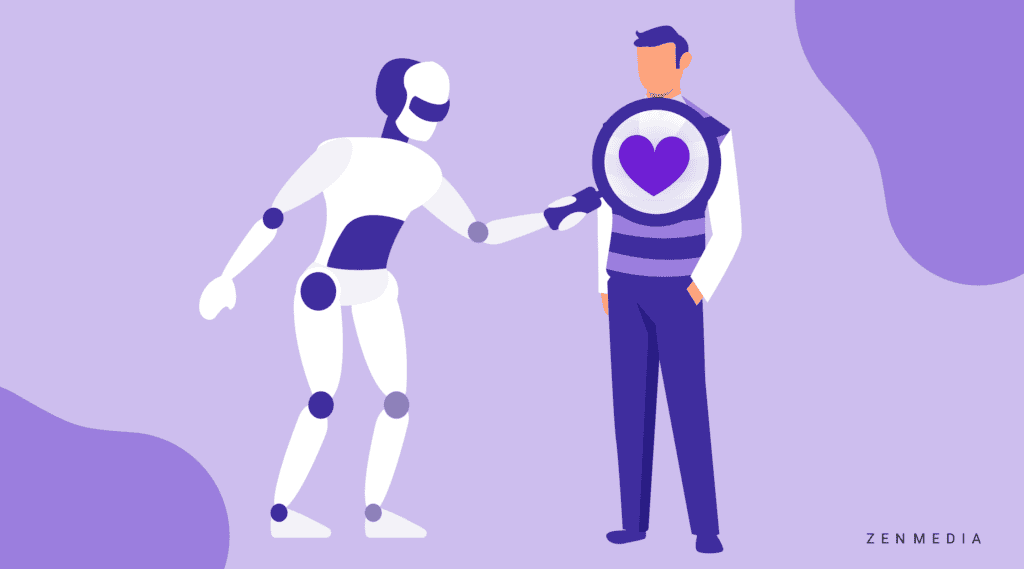
Despite all the technological advancement on display at HumanX, a common theme emerged across panels: the human element remains irreplaceable. In our panel, Monica emphasized that “the people side of AI” is the real challenge, and this resonates deeply with our experience in PR. The most sophisticated AI tools still lack contextual awareness, which can impact its output’s emotional intelligence and cultural sensitivity (this is another reason why our agency stresses the importance of deeply editing and auditing any AI-generated content).
And, of course, AI doesn’t have the ability to build genuine relationships—a crucial skill that sits at the heart of effective public relations.
In fact, AI’s limitations highlight the increasing value of distinctly human capabilities in PR. While algorithms excel at data analysis and pattern recognition, they struggle with nuance and creativity. With AI, you get out what you put in. So, at Zen Media, we’re finding that AI’s growing presence is actually increasing the premium on team members who demonstrate exceptional emotional intelligence, creative thinking, and strategic insight. The PR practitioners who will thrive in this AI-powered future aren’t those with the most technical expertise, but those who can combine technological leverage with deep human understanding.
This realization has profound implications for how PR professionals should approach their careers and how agencies should structure their teams. Rather than competing with AI on efficiency or output volume, we should be doubling down on the interpersonal and creative skills that algorithms can’t replicate. This means investing more in relationship development, creative ideation processes, and the cultural sensitivity that enables meaningful connection across diverse audiences. In an AI-enhanced world, being distinctively human becomes a competitive advantage.
Related reading: The Human Touch in a Digital World: AI-Assisted Niche Marketing
Implementation Roadmap: From AI-Curious to AI-Empowered

I said it before, and I’ll say it again: The incredible impact of AI isn’t just something best leveraged by tech companies; these are important—crucial—tools for everybody. The gap between interest and implementation I witnessed at HumanX highlights the need for a practical roadmap for PR firms looking to leverage AI. Based on our experience at Zen Media and insights from the conference, I recommend a three-phase approach:
- Exploration
- Integration
- Transformation
The exploration phase involves experimenting with readily available tools like ChatGPT, Claude, and Perplexity for discrete tasks like brainstorming angles or refining messaging. This low-risk starting point builds familiarity and confidence.
The integration phase moves beyond experimentation to systematic implementation. This means developing standard operating procedures for AI use across common PR functions like media outreach, first draft content creation, and measurement. Our agency has created decision trees that guide when to use AI versus when human touch is essential, prompt libraries for consistent results, and quality control processes to ensure AI outputs align with client expectations. These systems transform AI from an occasional helper to a reliable team member.
The transformation phase is where the true competitive advantage emerges. This involves reimagining PR processes from the ground up with AI capabilities as a foundational assumption rather than an add-on feature. For example, rather than simply using AI to generate more pitches faster, we’re building systems that continuously analyze media coverage patterns, journalist preferences, and client messaging to automatically identify high-probability media opportunities. This level of implementation doesn’t just improve efficiency—it creates capabilities that simply weren’t possible in the pre-AI era.
The Time for AI in PR Is Now
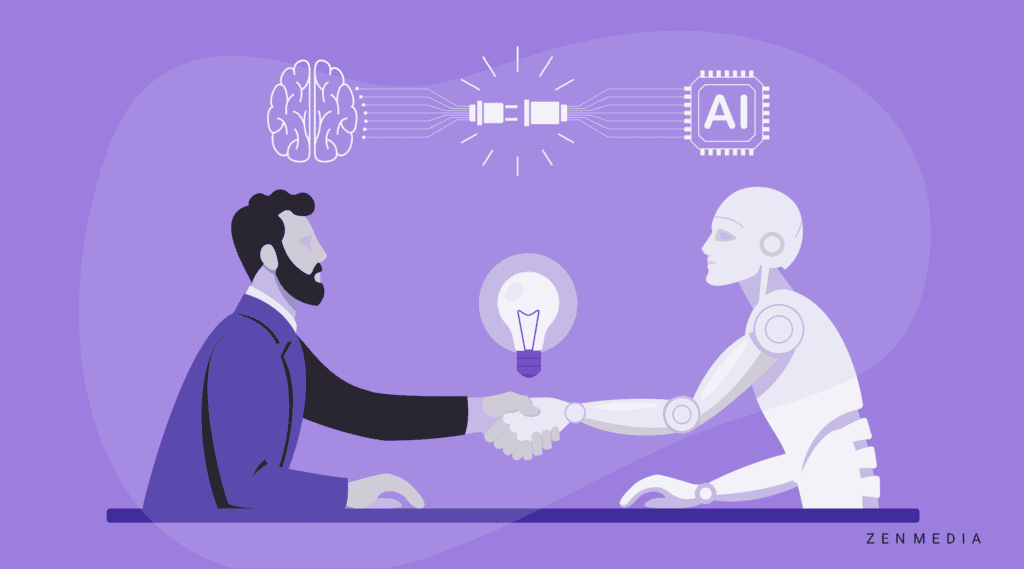
As I reflected on my HumanX experience, one thing became crystal clear: the window for gaining competitive advantage through AI adoption in PR isn’t going to stay open forever. Right now, we’re in a period where implementation—not just awareness—creates significant differentiation. The 90% of attendees who aren’t using AI tools daily represent both the current state of the industry and the opportunity for those willing to move faster than their peers.
At Zen Media, we’re embracing this moment by building AI capabilities into every aspect of our service delivery. We’re investing in team training, developing proprietary systems, and partnering with clients who share our vision of AI-enhanced communications. But we’re doing this with a clear understanding that technology is an enabler, not a replacement, for the strategic thinking and creative insight that drive breakthrough PR results. AI is transforming how we execute, but our purpose remains constant: to help brands connect authentically with their audiences through compelling narratives.
If there’s one call to action I’d leave you with, it’s this: start building your AI habit stack today. Don’t wait for the perfect implementation plan or for the technology to mature further. The competitive advantage isn’t coming from having the most sophisticated AI strategy—it’s coming from consistent, daily implementation that compounds over time. Not sure where to begin? Connect with our experts to discover how our cutting-edge, AI-powered PR approach can transform your brand’s communications strategy. We’re helping B2B companies navigate this new frontier with both technological expertise and strategic insight. The future of PR isn’t human versus AI—it’s humans and AI versus humans alone, and we’d love to help you get on the right side of that equation.

